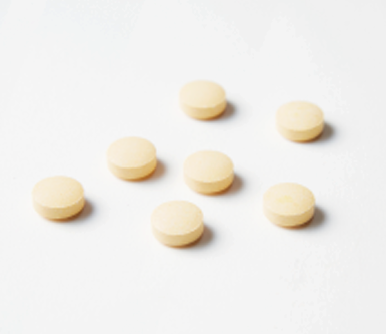
Scientific Name: Twendee X® (TwX)
Product Name: Oxicut®
Grade A Certified Supplement by the Evidence Committee of the Japan Dementia Prevention Society
Twendee X® is an antioxidant supplement developed by Haruhiko Inufusa, containing eight beneficial ingredients such as Coenzyme Q10, vitamins, and amino acids. In 2014, it was evaluated by the third-party organization ICDD as the "most powerful antioxidant supplement in the world."
Additionally, in 2019, a clinical study led by the Evidence Committee of the Japan Dementia Prevention Society confirmed for the first time globally that it can slow the progression of mild cognitive impairment. Safety tests were conducted in 2007.
Ingredients: Coenzyme Q10, Vitamin C, L-Glutamine, L-Cystine, Crystalline Cellulose, Stabilizer (Hydroxypropyl Cellulose), Magnesium Stearate, Fumaric Acid, Succinic Acid, Colloidal Silicon Dioxide, Calcium Carboxymethyl Cellulose, Vitamin B₂, Niacin

Scientific Name: Twendee Mtcontrol® (TwM)
Product Name: Mtcontrol®
Twendee Mtcontrol® is an antioxidant supplement designed to expand the antioxidative effects of Twendee X® and to be applicable to a wider range of uses.
Twendee Mtcontrol® builds on the eight ingredients of Twendee X®, adding seven uniquely formulated components to provide stronger antioxidant effects. It is anticipated to help prevent and improve a broader range of diseases, and research is ongoing. Safety tests were conducted in 2020.
Ingredients: Maltose, Coenzyme Q10, L-Glutamine, Vitamin C, L-Cystine, Crystalline Cellulose, Stabilizer (Hydroxypropyl Cellulose), Fumaric Acid, Succinic Acid, Magnesium Stearate, Colloidal Silicon Dioxide, Lactoferrin, Calcium Carboxymethyl Cellulose, Vitamin B₂, Niacin, Calcium Pantothenate, Vitamin B₁, Vitamin B₆, Folic Acid, Vitamin B₁₂, Biotin (contains milk ingredients).

Scientific Name: Twendee S® (TwS)
Product Name: SUPALIV®
Acetaldehyde, produced during alcohol metabolism, is known to cause oxidative stress and lead to various health issues. Twendee S® was developed to accelerate alcohol metabolism and the breakdown of acetaldehyde, thereby reducing oxidative stress after alcohol consumption. Its purpose is to alleviate hangovers and mitigate alcohol-related health risks.
After undergoing efficacy and safety testing by third-party organizations, it is now widely available in convenience stores, drugstores, and other retail outlets nationwide. Safety testing was conducted in 2007.
Ingredients: Maltose, Coenzyme Q10, Vitamin C, L-Glutamine, L-Cystine, Crystalline Cellulose, Stabilizer (Hydroxypropyl Cellulose), Magnesium Stearate, Fumaric Acid, Succinic Acid, Colloidal Silicon Dioxide, Vitamin B₂, Niacin
Safety testing was conducted by Ina Research Inc. (http://www.ina-research.co.jp). All tests were cleared, confirming its safety. The maximum safe daily intake is reported to be over 2g per kilogram of body weight.

A state of high oxidative stress means that mild inflammation is continuously occurring somewhere in the body. The cells and tissues around the inflamed areas gradually sustain damage, which in turn further increases oxidative stress. Naturally, as oxidative stress rises, it triggers more inflammation, creating a vicious cycle. Unless this cycle is interrupted, the negative feedback loop between oxidative stress and inflammation will persist.
This vicious cycle is thought to be a trigger for the onset of diseases and can lead to their progression and spread. Therefore, when events that increase oxidative stress occur, it is crucial to promptly eliminate the underlying reactive oxygen species (ROS) and free radicals, maintain balance with antioxidant capacity, and break the cycle of oxidative stress and inflammation.
By incorporating well-balanced antioxidant supplements into daily life, it becomes possible to support the body's ability to counteract oxidative stress, making their intake an essential part of a healthy lifestyle.
"Pharmaceuticals" refer to products that contain a single active ingredient proven to be effective and are used for the purpose of "treating" diseases. They require a diagnosis by a doctor and cannot be used preventively. By nature, pharmaceuticals often involve supplementing or substituting a single component that does not naturally exist in the body to restore normal function in affected areas. However, the continuous administration of a single-substance compound (a foreign substance) can sometimes create imbalances in the body, manifesting as side effects.
In contrast, oxidative stress arises from disruptions in the body's homeostatic functions*. The body's inherent homeostatic functions are designed to constantly maintain normality by relying on a variety of substances with various roles as long as the organism is alive. This role is fulfilled by antioxidant supplements.
*Homeostasis: The property of maintaining stable physiological functions regardless of changes in internal or external environmental factors.
Based on validated data, patent applications were filed in various countries worldwide. Composition patents have been obtained in countries around the globe, including Japan Patent No. 5777821 ("Composition for Protection Against Cytotoxicity"), as well as in Germany and other EU member states (36 countries), the United States, Canada, China, Australia, South Korea, and other Eurasian countries.

Whitening Effects / Sunburn Prevention / Reduction of Snoring Caused by Inflammation in the Body / Improvement of Capillary Blood Flow Throughout the Body / Prevention of Metabolic Diseases Caused by Oxidation / Improvement of Degenerative Diseases / Improvement of Systemic Diseases Caused by Oxidation / Cancer Cachexia / Diabetic Peripheral Neuropathy / Regulation of the Body’s Internal Clock / Improvement of Pregnancy-Related Conditions / Fatigue Recovery